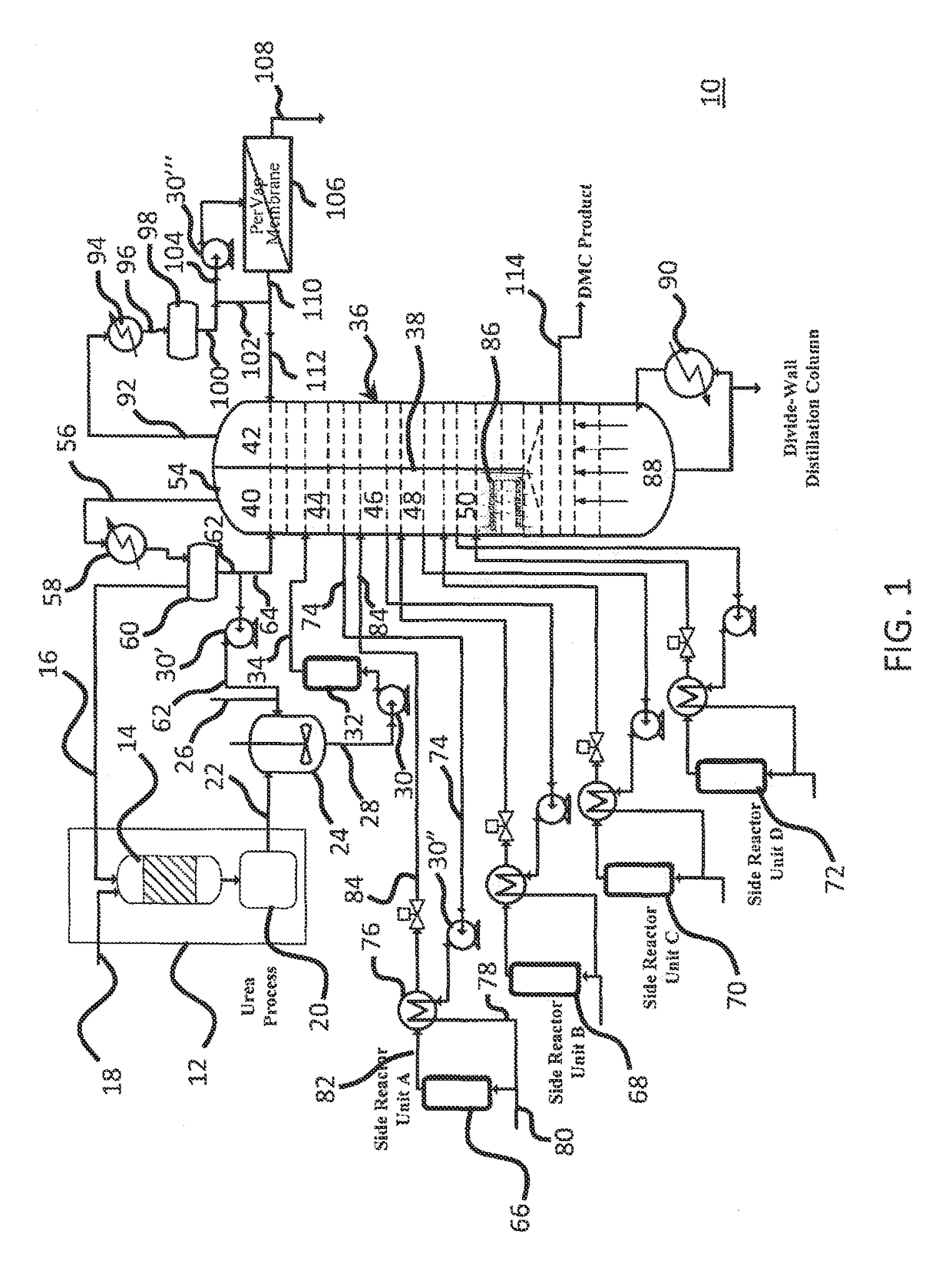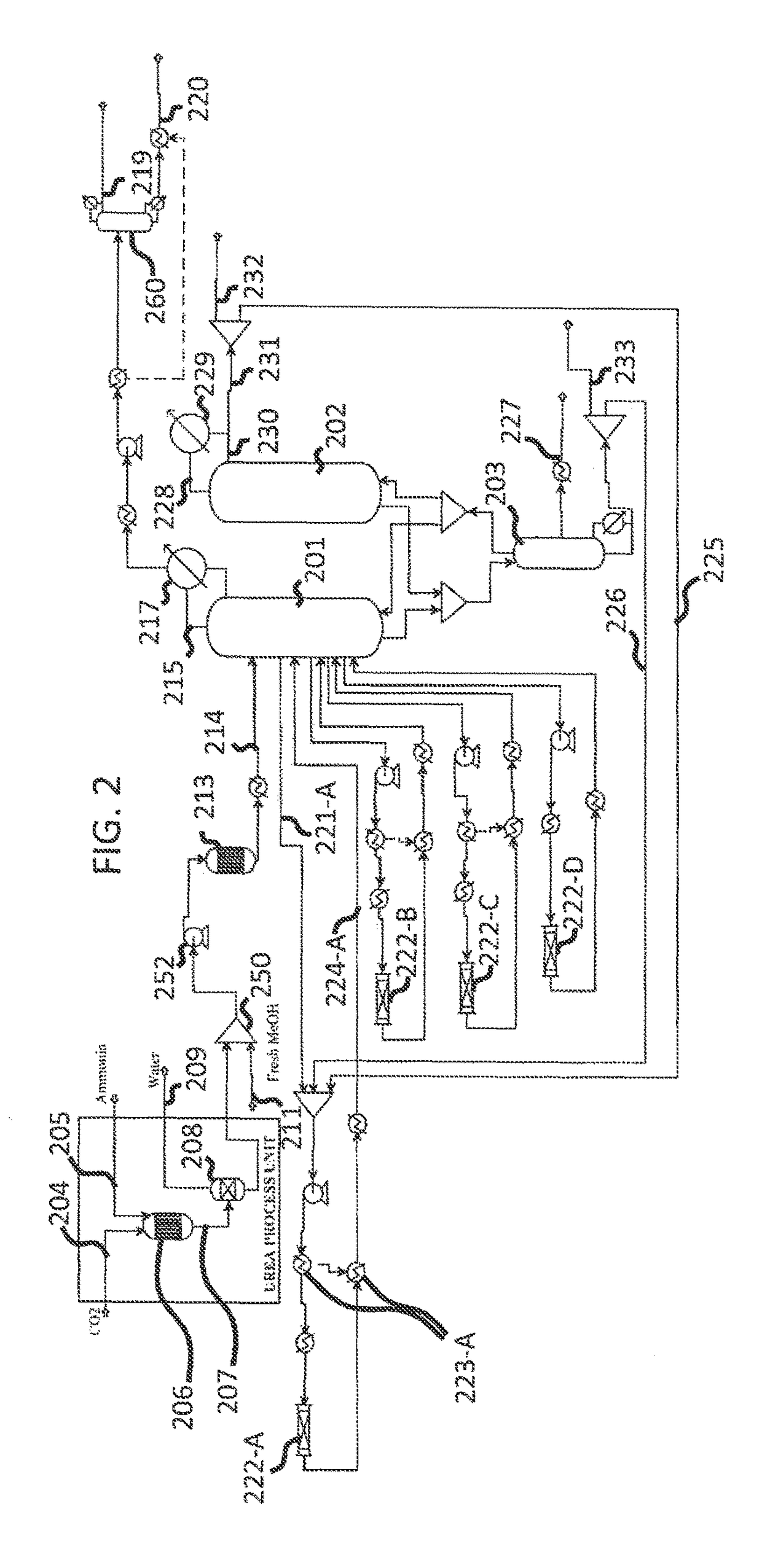Method of producing high-concentration alkyl carbonates using carbon dioxide as feedstock
a technology of alkyl carbonate and carbon dioxide, which is applied in the field of reactive distillation, can solve the problems of low conversion rate at conventional reactive distillation conditions, uneconomical industrial process catalyst separation, and potential explosive mixtures, and achieve high alcohol conversion and alkyl carbonate selectivity, and reduce capital expenditures
- Summary
- Abstract
- Description
- Claims
- Application Information
AI Technical Summary
Benefits of technology
Problems solved by technology
Method used
Image
Examples
Embodiment Construction
[0033]Referring now to FIGS. 1-4, there is described a process for producing purified and concentration dimethyl carbonate.
[0034]As shown in FIGS. 1-4, the method and system consists of a reactive distillation based process which is an ammonia based process configuration.
[0035]Referring now to FIG. 1, ammonia based distillation system 10 includes a plurality of recycling components and steps which results in a purified and concentrated dimethyl carbonate composition exiting from a partitioned distillation column 36 on dimethyl carbonate product line 114. The system as shown in FIG. 1 is for the synthesis of alkyl carbonate using captured carbon dioxide and alcohol (methanol). Synthesis of dimethyl carbonate using captured carbon dioxide as a model process is presented, however, the system and method is applicable for synthesis of other organic carbonates, such as diethyl carbonate, sequences of analogs using alcohols of higher molecular weights and mixed alkyl carbonates using diffe...
PUM
| Property | Measurement | Unit |
|---|---|---|
| molar ratios | aaaaa | aaaaa |
| pressure | aaaaa | aaaaa |
| temperature | aaaaa | aaaaa |
Abstract
Description
Claims
Application Information
 Login to View More
Login to View More - R&D
- Intellectual Property
- Life Sciences
- Materials
- Tech Scout
- Unparalleled Data Quality
- Higher Quality Content
- 60% Fewer Hallucinations
Browse by: Latest US Patents, China's latest patents, Technical Efficacy Thesaurus, Application Domain, Technology Topic, Popular Technical Reports.
© 2025 PatSnap. All rights reserved.Legal|Privacy policy|Modern Slavery Act Transparency Statement|Sitemap|About US| Contact US: help@patsnap.com



